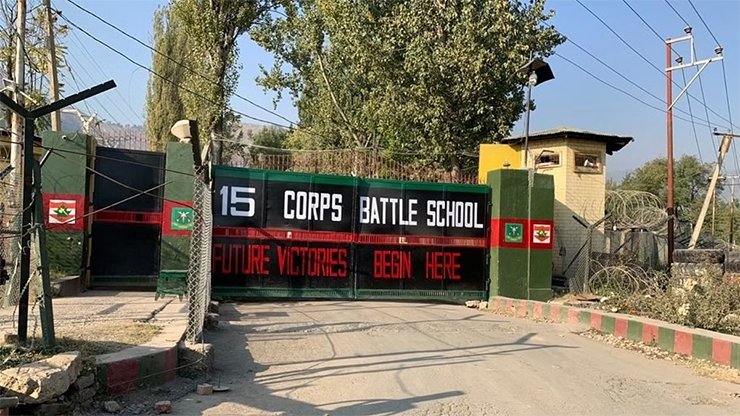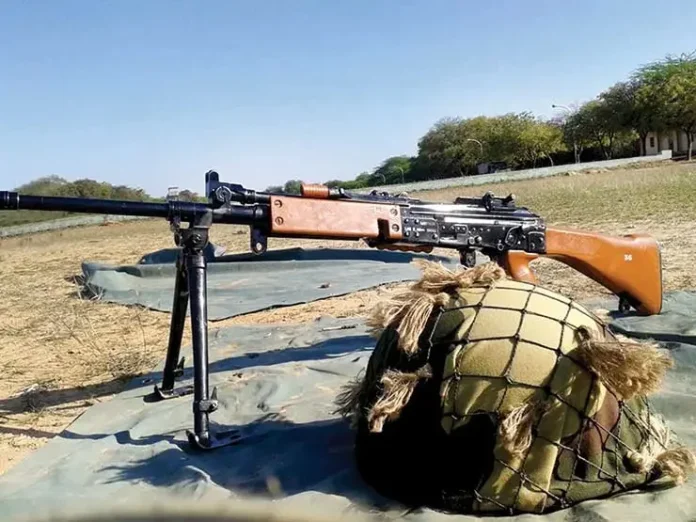… IT Conscription
Absorption of technology, be it information security technologies or technology used in modern weapon and weapon control systems requires the users to develop a level of comfort in using the technology and overcoming any hesitation in its use. The term IT conscription is intended to imply an organisation-wide policy that mandates possession of a minimum level of IT literacy by every single officer, Junior Commissioned Officer (JCO) and OR of the Indian Army that would facilitate developing this level of confidence in all ranks. The level of IT literacy to be attained could be separately defined for different ranks and Arms and Services, however, it must include exposure to computer programming. This would aid the development of Algorithmic Thinking in all ranks and is essential if they are to man moderately complex sys. The idea of teaching computer programming to all ranks, especially from all Arms and Services, may not seem as far-fetched as it sounds when we consider that IT literacy programs like White Hat Jr, ‘Scratch’ from MIT and ‘Hour of Code’ from Microsoft are designed to teach programming concepts to five-year-old children. IT conscription would also foster a mindset of taking ownership of IT and information system assets and their security rather than treating it as a task to be performed by a particular Arm.
Procurement / Contract Management
Induction of new systems in the Army, from database management software and servers/storage to complex weapon systems, requires their procurement. The procedural rigidity of defence procurement has drawn comment from the COAS himself, who has called for a rethink of the L1 concept in defence procurement under which contracts are awarded only to the lowest bidder. There is a chronic underutilisation of funds earmarked for capital acquisitions. Between 2002–03 and 2013–14, a total sum of Rs 4,67,665 crore was allocated for capital acquisition, out of which Rs 42,084 crore remained underutilised.
While these figures do seem to support the theory that complicated procurement procedures lead to stonewalling of procurements, however, the fault at times lies equally with the Service HQs especially regarding the formulation of GSQRs. The case in point include the 2011 RFP for procurement of Assault Rifles, with the GSQR requiring multi-calibre rifles capable of firing both the INSAS 5.56mm and AK 47 7.62 mm ammunition, or PMO SURAJ’s RFP for counter-drone systems which did not specify the threat for which counter-drone measures were required i.e. for quadcopters, nano drones, and the bigger kamikaze loitering ammunition type drones.
The examples quoted above point to a larger deficiency i.e. the capability gap that exists in the Army when it comes to project management. The CAG in its audit report that forms part of the MoD Annual Report 2018-19 has also pointed to examples of deficient contract management in the Services. As prominent examples like the failed JEDI cloud infrastructure solicitation by the USA’s DoD show, deficient contact management can seriously derail the modernisation plans of even the most advanced countries.
Project / Contract Management skills can be developed in the Army by instituting multiple measures like organising corporate training for officers by reputed consultancy firms, preferably by one of the Big 4 – PwC, EY, Deloitte and KPMG, encouraging officers to acquire certifications like the Project Management Professional, organising workshops on Contract Law, by hiring consultancy services for procurement management of major projects and lastly by encouraging domain specialisation.
Domain Specialisation (DS)
A defining attribute of any WCM would be the professionalism it displays at the individual and organisation level. DS is a higher dimension of professionalism that enables military professionals to function as subject matter experts in a field of their choosing and thus ensure mission success whether it is in formulating an RFP with the right QRs or in successfully exploiting support systems that have been created such as MES, DRDO, the Indian Defence Accounts Services etc to their maximum potential. Presently, two years of study leave is considered sufficient for gaining DS. However meaningful DS should include elements of doctoral research, experience gained by serving with Government bodies in the particular field and tenures in the Army in a specific appointment.
Meaningful opportunities for DS are often not available due to constraints of posting management and a shortage of officers. However, the payoff that DS accrues would more than offset the organisational cost incurred on its account. Indian Army should also have MoU with IIMs and other eminent institutes to provide dedicated seats for all Arms and Services for pursuing MBA and PhD just as M Tech seats are provided for officers from Engineers, Sigs and EME.
Providing meaningful opportunities for DS would also serve to motivate officers who have been overlooked for promotion as it would provide them with the desired professional enrichment. These officers could be offered opportunities for pursuing MBA or PhD on study leave of up to three years and a deputation with Government bodies provided they commit to re-employment for two tenures, thus increasing their availability to the organisation post gaining DS.
Tapping the Civilian and Veteran Talent Pool
Tapping the civilian and veteran talent pool would provide additional resources with valuable domain expertise. Establishing a formal protocol for seeking professional advice from civilian and military veteran experts for military projects would function as a force multiplier that would cultivate institutional knowledge and increase the success rate of military projects. The intersecting areas of interest could vary from fields like project management to operational art. For example veterans with vast experience in Continuous integration (CI), continuous delivery/deployment (CD) ops could be co-opted as guest, faculty at the Corps Battle Schools and could also visit units in CI/CT areas to share their experiences.

Role of NCOs and JCOs
“The key to our success and to the quality of our post-Vietnam force is the small-unit leader: the junior officer and non-commissioned officer, the people who have the closest, most direct contact with the soldier, the people who get the job done . . . In the final analysis, “face-to-face,” day-to-day leadership of these young soldiers will determine the success of our efforts to revitalise the Army and build a leaner, more professional, quality force”
- General Bruce Palmer, Jr, Vice Chief of Staff of the US Army, 1968-7218
In the post-Vietnam war era, the US Army transformed itself from an army in crisis in the late 1960s to a WCM by the 1990s that saw success in the Gulf and other conflicts and won the admiration of the global military community. If only one factor was to be picked up for having contributed to this transformation, it would perhaps be the nurturing of the non-commissioned officers (NCOs) as junior leaders through flagship programs like the NCO Education System (NCOES) and NCO Academies. The Indian Army could do well to emulate this example especially considering the shortfall in the officer cadre.
Takeaways
“Military reform is about more than changing doctrine. To implement its doctrine, an organisation must have appropriate training practices, personnel policies, organisations, equipment, and leader development programs… Finally, the process of developing, implementing, and institutionalising complementary reforms can take several decades. This suggests that stability in an organisation’s mission and resources can be important.”
In the post-Vietnam War period, Chiefs of Staff of the US Army, Gen Abrams and Gen Weyand and Commanding General of US Army’s Training and Doctrine Command (TRADOC), Gen Starry carried forward the reforms initiated by their predecessors, Gen Westmoreland and Gen DePuy, thus providing the stability in leadership that is essential for long term reforms. In the Indian context, this stability in leadership needs to extend to the political establishment as well to ensure sustained impetus for WCM transformation.
Lastly, more than providing answers, this article seeks to raise a few questions that may be useful in guiding the Indian Army’s transformation into a WCM. For instance, can we count on the maturity of successive political establishments to provide continued emphasis to force transformation? To what extent will parochial interests of individual Services affect a harmonious transformation? Given that the Defence establishment is generally not known for its patience in dealing with the slow pace of action, would it be able to summon the forbearance required to persevere with a non-linear path to transformation? The answers to these questions would be vital in determine the chances of success in the Indian Army’s endeavour to become a WCM. Given the political instability and precarious security situation in the West and the neo-imperialistic ambitions of our Eastern neighbour, if India is to become a net security provider in the Subcontinent and the Indian Ocean Region, the transformation of the Indian Defence Forces into a WCM is imperative, not optional.
-The writer is a veteran from the Corps of Signals. His interest lies at the intersection of technology, management and psychology. He can be reached at rajeev2.0@protonmail.com





